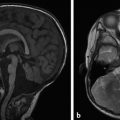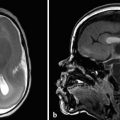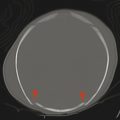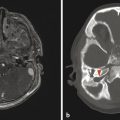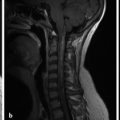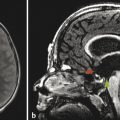2 Anatomy and Development
2.1 Introduction
Neuroradiology requires a detailed understanding of neuroanatomy and its associated functions. The relationship between function and structure in neuroradiolopgy is less intuitive than, for instance, in musculoskeletal or cardiac imaging. With an appreciation for neuroanatomy, in conjunction with an understanding of pathophysiology and imaging technology (and its limitations), most neuroradiologic diagnoses can be approached in a logical manner. Within pediatric neuroradiology, the embryologic underpinnings of neuroanatomy become important, as does the process of normal myelination. This chapter addresses the basics of brain development and anatomy to serve as the foundation for additional chapters in this book. Further discussion of neuronal proliferation, migration, and organization is addressed in Chapter 3, and neurovascular anatomy is addressed in Chapter 12. Anatomy of the skull bones is presented in Chapter 15, and anatomy of the pituitary gland is addressed Chapter 13.
2.2 Basics of Embryology
The brain develops from the rostral neural tube first as a three-part structure during week four of gestation, and then as a five-part structure in week six of gestation (Table 2-1). In the transition from a brain of three parts to a brain of five parts, the most rostral aspect (the prosencephalon) of the brain differentiates into the telencephalon and diencephalon. The mesencephalon remains the mesencephalon, and the more caudal rhombencephalon differentiates into the metencephalon and myelencephalon.
Three-part | Five-part | Mature |
Prosencephalon | Telencephalon | Cerebral cortex and white matter, caudate nucleus, putamen, globus pallidus |
Diencephalon | Thalamus, hypothalamus, subthalamus, epithalamus (pineal gland) | |
Mesencephalon | Mesencephalon | Midbrain tectum (superior and inferior colliculi), substantia nigra, red nuclei, cranial nerves III and IV |
Rhombencephalon | Metencephalon | Pons, cerebellum, cranial nerves V–VIII |
Myelencephalon | Medulla, cranial nerves IX–XII (and parts of VIII) | |
Data from Gilroy A, MacPherson B, Ross L. Neuroanatomy: Brain. In: Gilroy A, MacPherson B, Ross L, eds. Atlas of Anatomy. 2nd ed. New York, NY, Thieme, 2012, p 625. | ||
2.3 Basics of Neuroanatomy: Hemispheres, Lobes, and Gyri
The largest part of the human brain is the two cerebral hemispheres, which are divided into four lobes; frontal, parietal, temporal, and occipital (Fig. 2.1). The brainstem, including the midbrain, pons, and medulla, connects the cerebral hemispheres to the cerebellum and spinal cord. The cerebellum is separated from the cerebral hemipheres by a thick layer of connective tissue (dura) known as the tentorium cerebelli. The two cerebral hemispheres are separated by the falx cerebri and are connected by several commissures. Commissures are bundles of white matter that connect the hemispheres, with the largest commissure being the corpus callosum (Fig. 2.2). Additional commissures include the anterior commissure, posterior commissure, habenular commissure, and hippocampal commissure.


The frontal lobes are commonly stated to be associated with emotion; however, the posterior aspect of the frontal lobes (the precentral gyrus) represents primary motor cortex. The precentral gyrus is along the anterior margin of the central sulcus (Fig. 2.1), and the postcentral gyrus of the parietal lobes is along the posterior aspect of the central sulcus. The postcentral gyrus represents the location of primary sensory cortex. Collectively, the pre- and postcentral gyri are known as the peri-rolandic cortex, a highly eloquent area of the brain.
The frontal lobes anterior to the precentral gyrus can be divided into the superior, middle, and inferior frontal gyri (Fig. 2.3). Along the inferior margin of the frontal lobe are anteriorly–posteriorly directed gyri, of which the gyrus rectus is the most medial (adjacent to the olfactory bulb), and lateral to this are the medial and lateral orbital gyri. The orbital gyri may be difficult to uniquely identify, depending upon the location. The orbital gyri are best seen on coronal images; however, they may be difficult to identify, as their appearance is different anteriorly than posteriorly.

The segments of the temporal lobe are best depicted on a coronal image, with the superior, middle, and inferior temporal gyri forming the lateral margin of the temporal lobe, and with the occipitotemporal (a.k.a. fusiform) gyrus and parahippocampal gyrus being located inferiorly. The parahippocampal gyrus is adjacent to the hippocampus. Along the anterior aspect of the temporal horn of the lateral ventricle is the amygdala, and the medial projection of the temporal lobe is the uncus (Fig. 2.3). An additional gyrus is the transverse temporal gyrus, also known as Heschl’s gyrus, which courses between the posterior insula and the superior temporal gyrus. Heschl’s gyrus is involved in auditory processing, and language reception (Wernicke’s area) is typically located within the posterior aspect of the left superior temporal gyrus. The capacity for expressive language (Broca’s area) is typically located within the left inferior frontal gyrus, particularly in portions of this gyrus known as the pars opercularis and pars triangularis. Receptive and expressive language are connected by a bundle of white matter known as the arcuate fasciculus.
Behind the postcentral gyrus, the parietal lobe can be divided into the superior and inferior parietal lobules. Within the inferior parietal lobules are subareas known as the angular and supramarginal gyri (Fig. 2.1). Located posteriorly and inferiorly to the parieto-occipital sulcus, as seen on a midsagittal image, is the occipital lobe. Within the occipital lobe is the calcarine fissure (Fig. 2.4), which is lined by primary visual cortex. The wedge-shaped area between the parieto-occipital sulcus and calcarine fissure is known as the cuneus.

The deep gray nuclei include the caudate nuclei, the putamina, and the globi palladi. The putamen and globus pallidus are collectively referred to as the lentiform nuclei. The lentiform nuclei and the globus pallidus are separated from one another by the anterior limb of the internal capsule, a set of white-matter bundles (albeit with internal gray-matter bridges). The lentiform nucleus is posteriorly bounded by the posterior limb of the internal capsule (PLIC), behind which is the thalamus (Fig. 2.5). Beneath the globi palladi are the hypothalami (Fig. 2.6). The hypothalami join at the midline at the level of the infundibular stalk, which continues inferiorly to the pituitary gland. Posterior to the medial aspect of the thalami and projecting posteriorly into the interhemispheric fissure is the pineal gland, above the posterior commissure (Fig. 2.7).



The PLIC carries the corticospinal tracts, which are primary motor tracts of the body. The posterior portion (retrolenticular portion) of the PLIC contains the optic tracts. The corticospinal tracts descend into the brainstem through the cerebral peduncles, a part of the midbrain. From there, they descend into the pons and medulla. Within the ventral medulla, fibers of the corticospinal tracts decussate within the medullary pyramids, after which they descend to the spinal cord.
The cerebellum is connected to the brainstem by three pairs of peduncles, the superior, middle, and inferior peduncles. The middle cerebellar peduncle is the largest white-matter bundle in the body, with more fibers than the spinal cord or the corpus callosum. The two cerebellar hemispheres are separated in the middle by the vermis, which forms the posterior margin (or “roof”) of the fourth ventricle. A normally developed vermis has an appearance similar to the “Pac-Man” video game character when viewed on sagittal images.
The posteriormost portion of the midbrain is the tectal plate, comprising the two superior colliculi (involved in visual coordination) and the two inferior colliculi (involved in auditory processing). Because there are four colliculi in total, the tectal plate is sometimes known as the quadrigeminal (i.e., “four brothers”) plate.
Within the cerebral hemispheres, the periphery is composed of gray matter, also known as the cerebral cortex. Gray matter represents neurons and cell bodies that perform the functions of the brain. Deep to this there is white matter, which represents the connections to different parts of the brain and body. White-matter fibers include commissural fibers, which travel to the opposite hemisphere; association fibers, which travel within a given hemisphere; and projection fibers, which extend to the deep gray nuclei, the brainstem/cerebellum, or the spinal cord.
The white matter of the brain can be approximately subdivided into juxtacortical and deep white matter, with periventricular white matter forming a subset of deep white matter. Some sources state that the white matter can be divided into subareas known as the centrum semiovale and corona radiata on the basis of its relationship to the level of the lateral ventricles; however, this is incorrect. Formally speaking, the corona radiata represents the white-matter fibers that extend superiorly from the internal capsule, regardless of their relationship to the level of the lateral ventricle. The centrum semiovale is synonymous with cerebral white matter, which is also independent of the relationship with the lateral ventricle.
2.3.1 Ventricles and Cerebrospinal Fluid Spaces
The ventricular system is a collection of ependyma-lined CSF spaces within the brain. The two lateral ventricles communicate with the third ventricle through the foramina of Monro, which communicate with the fourth ventricle through the aqueduct of Sylvius. Outflow of CSF from the fourth ventricle can occur inferiorly through the foramen of Magendie, and laterally through the foramina of Luschka (Fig. 2.8). This is further discussed in Chapter 11.

The superficial CSF space, the subarachnoid space, overlies the pia-lined brain surface. The areas within the subarachnoid space where the pia mater and arachnoid membrane are not closely approximated with one another can be subdivided at times to provide improved anatomic description, and they are often referred to as cisterns (collections of fluid). Superior to the sella turcica is the suprasellar cistern. Around the midbrain are the perimesencephalic cisterns, including the anterolateral crural cisterns, the ambient cisterns laterally, and the quadrigeminal cistern posteriorly. Between the pons and the internal auditory canals, and anterior to the cerebellum, is the cerebellopontine angle cistern, and ventral to the pons is the prepontine cistern. Along the lateral aspect of the medulla are the lateral medullary cisterns, and below the cerebellar vermis is the cisterna magna.
Stay updated, free articles. Join our Telegram channel

Full access? Get Clinical Tree



